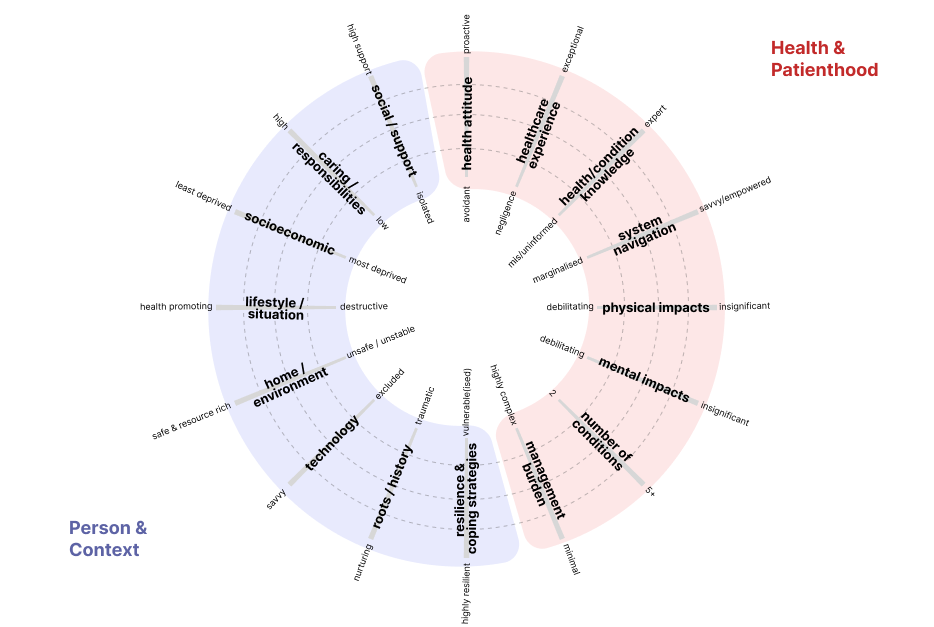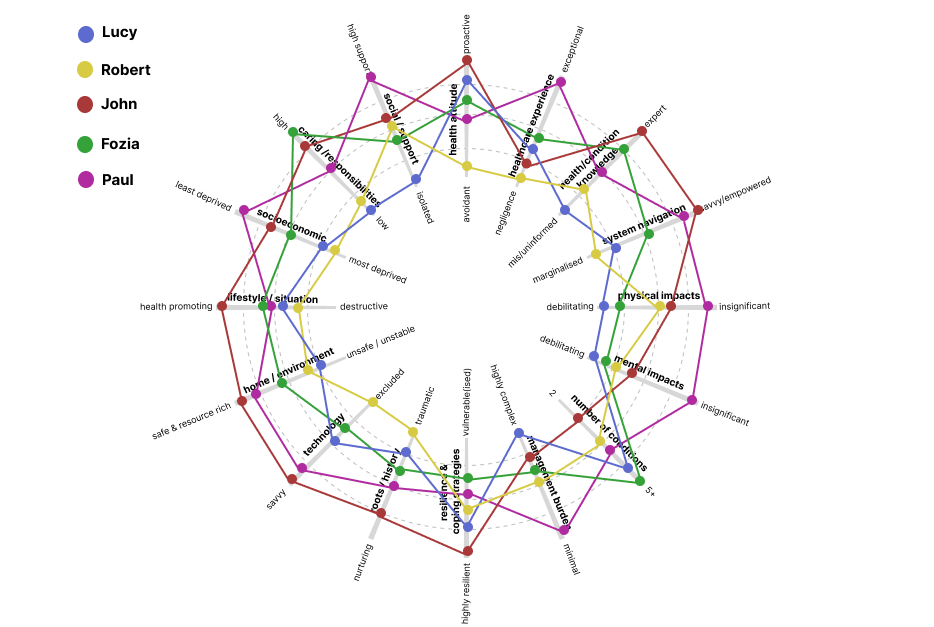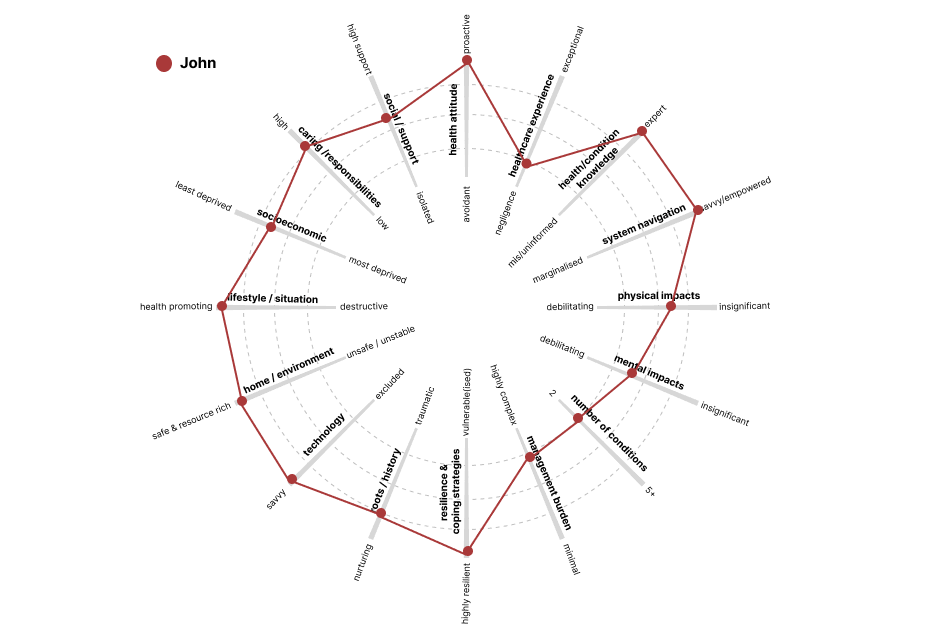Persona set¶
Overview¶
The persona set builds on the rich individual experiences captured in the Person maps, expanding beyond isolated individual stories to offer a network of personas that reflect a diversity of individuals and experiences within MLTC systems.
The persona set includes multiple stakeholders of MLTC systems including people with MLTC, their families, health and care professionals, and community organisations.
The persona set is being revised, refined and validated through stakeholder engagement. Currently, it includes:
| Persona | Description | Further detail |
|---|---|---|
| Lucy, 55 | Isolated self-manager Lives with contested conditions, no support, feels dismissed & abandoned. |
Lucy's person map Lucy & Anita's story |
| Anita, 41 | Overstretched GP Balancing person-centred care with systemic inefficiencies, heavy caseloads, and burnout. |
Lucy & Anita's story |
| Robert, 45 | Stigmatised & healthcare avoidant Previous experiences of care, addiction, and institutionalisation. Distrust and avoidance of healthcare, and difficulty prioritising his health due to past adversity and low self-worth. |
Robert's person map Animation about Robert Robert & Dan's story |
| Dan, 33 | Support worker Balancing workload with emotional demands, lack of resources. |
Robert & Dan's story |
| John, 57 | Expert patient & resilient carer Manages his own MLTC, cares for his wife and her mother. Due to bad previous experiences, he doesn’t always trust health professionals and strongly feels that the patient is an expert in their own body. Persistently challenges the system. |
John's person map John & Kathy's story |
| Fozia, 47 | Burnt out mum & carer Overwhelmed by balancing work, family life, and caring for her son with MLTC. Exhaustion, financial strain, and a lack of respite are impacting her physical and mental health. |
Fozias person map Fozia & Mohamed's story |
| Paul, 60 | Successful navigator Benefits from financial security, private care options, and connections to healthcare professionals. Doesn't feel defined by his MLTC |
Paul's person map |
Application & use¶
The persona set is produced and validated with system stakeholders. It reflects our principals for person mapping:
Dimensional & diverse. We use a framework based on the dimensions of the person maps to consider extreme-mainstream dimensions across person, context, health and patienthood. The lived experience personas selected represent different extremes and mainstreams across these dimensions.
Left: framework of extreme-mainstream dimensions extracted from person maps. Right: persona set plotted against dimensions.
Dynamic. Recognising that a person's context, health and patienthood may change over time, or in different scenarios (i.e. long-term, temporary, or situational). For example:
- Lucy’s fluctuating energy means that some days she's capable of going out, while on others she is housebound
- John’s experience with diabetes has changed over time; after a long time of feeling out of control and angry, his relationship towards his own health & the healthcare system has completely shifted
Dimensions of John's person map changing over time.
Systemic. The persona set includes stories from multiple stakeholders across different segments of our MLTC systems actor map. The stories highlight how these diverse perspectives intersect and relate.
We will continue to refine and co-produce the persona set with PPIE partners and system stakeholders. Including incorporating views from target populations for specific projects. The persona set will be used as exemplars alongside stakeholder engagement to test and validate innovations.
Insights & findings¶
The persona set provides insight into diverse experiences of the MLTC system, and highlights themes such as isolation, systemic disconnection, burnout in care providers, trauma and marginalisation, resilience, power and agency. These can help inform the development of future technologies, policies, and practices to improve healthcare delivery and support for people with MLTC.


